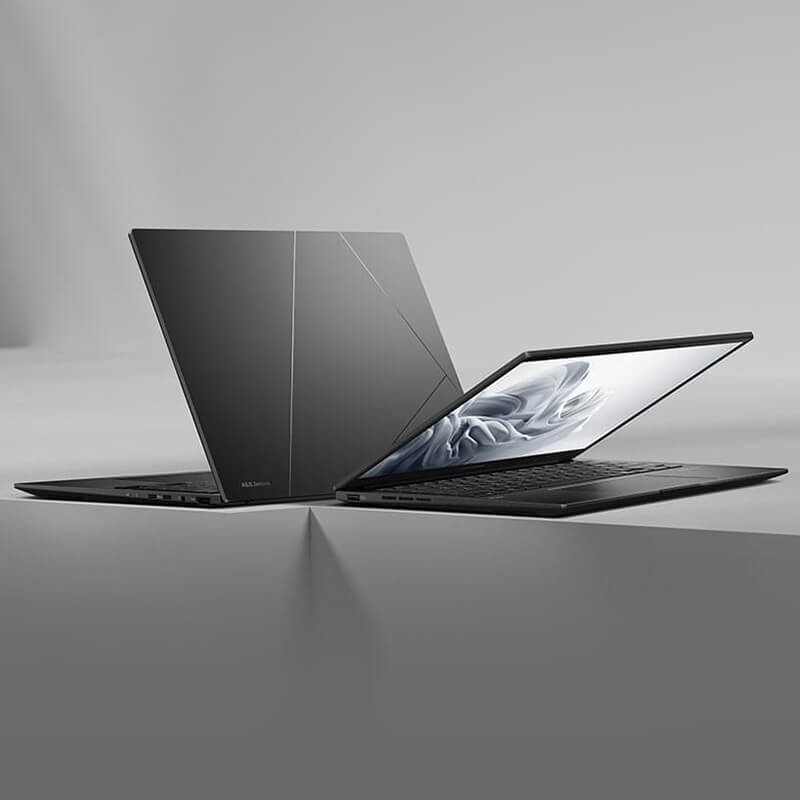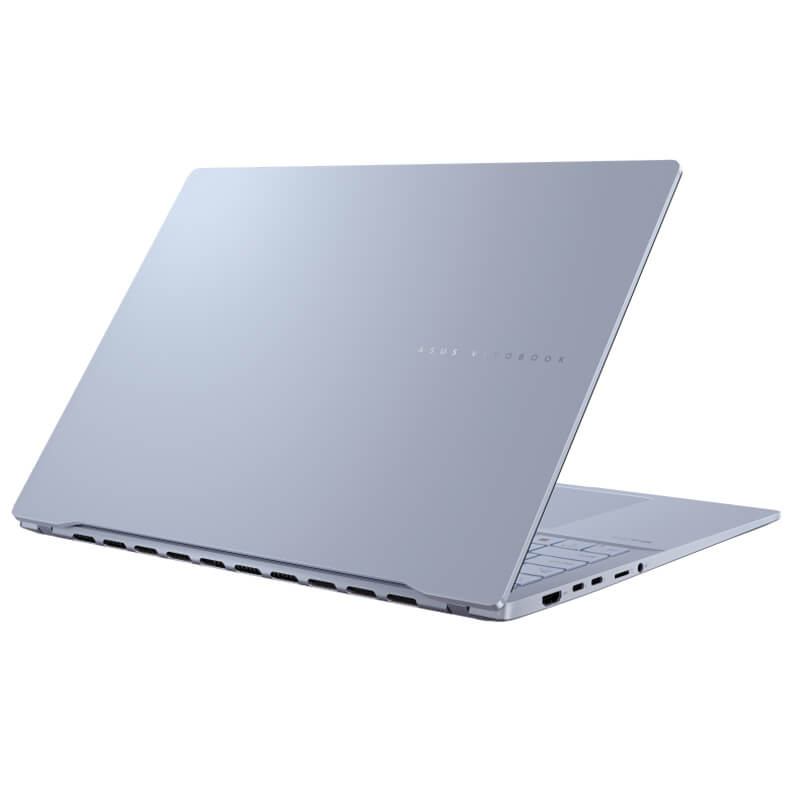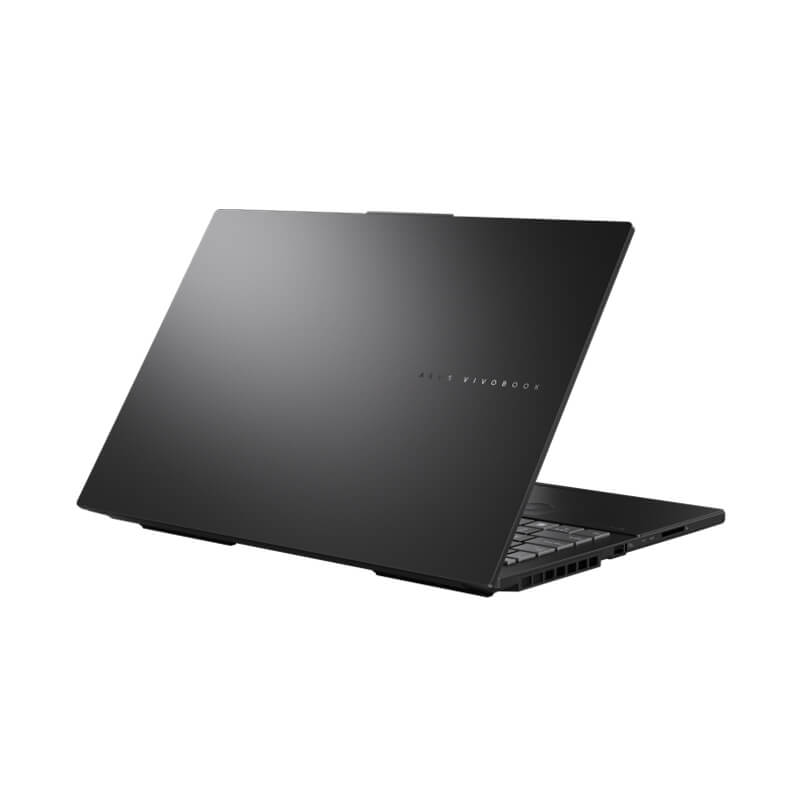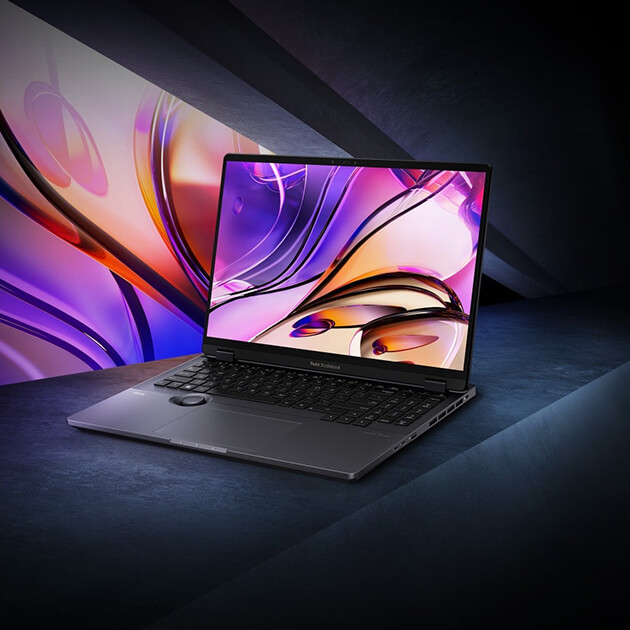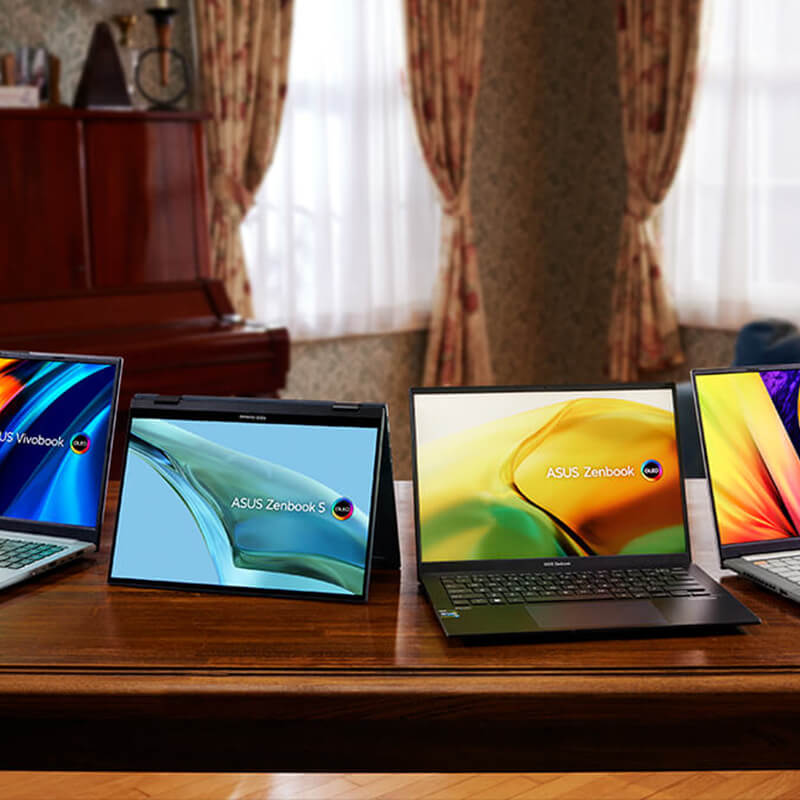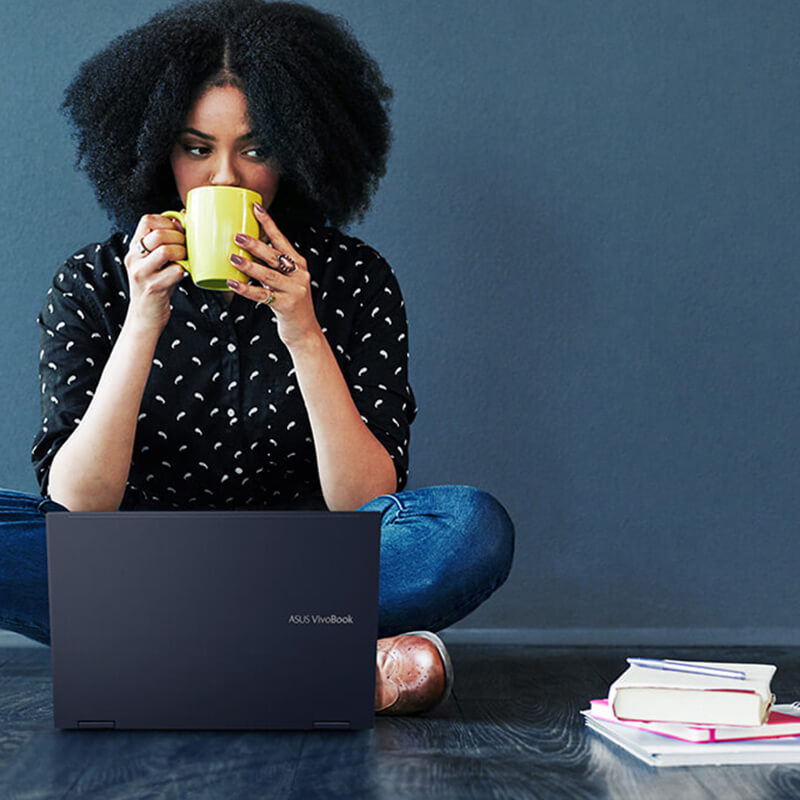
Jan 13, 2023
Are you looking for a laptop for a member of your household? For
instance, possibly a young student who will use the laptop for
schoolwork, a budding creative whizz who likes to share their
passion online, or an adult who enjoys streaming movies on lazy
Sundays. With a myriad of laptop options available in the market,
each boasting a unique set of features and specifications, it's
crucial to navigate this sea of choices with a clear understanding
of your needs. Here are some tips on choosing laptops for different
types of home users, depending on needs. We’ll also include some
ASUS recommendations.
Key Things To Consider When Choosing
When choosing a laptop, there are a few things you will want to
consider. First, you’ll want to determine which form factor fits
your needs best. Some of the more common form factors include the
traditional ‘clamshell’ laptop, a two-in-one convertible laptop
(with a 360° hinge that allows you to use it like a tablet), or a
laptop with a detachable keyboard. Then there are the more novel
options, such as laptops with a foldable screen or even a dual
screen.
Laptops are available in various screen sizes, and the screen size
will determine the size of the chassis. Most laptop displays are
between 13 and 17 inches. Thickness and weight are additional
factors to consider. If you have a preference, you may want to check
the materials used for the laptop. Plastic or aluminum are commonly
used due to their durability and weight. It’s also great if the
laptop has been tested to the toughest standards of durability, such
as the U.S. military 810H standard.
Next, you will want to check the specifications. Key components to
consider are processor (CPU), graphics card, memory, and storage.
These will determine how fast your laptop will process common and
complex tasks, how many processes you’ll be able to run at once, and
how many files the laptop will hold.
Next, there are different display technologies. We recommend OLED
screens, such as ASUS Lumina OLED options. They promise more
accurate, vivid colors and good visibility in different light
conditions, and are healthier for the eyes — emitting up to 70% less
potentially harmful blue light.
On the theme of health, some laptops also feature an antimicrobial
coating that can help inhibit up to 99% of microbial growth over a
24-hour period.
Finally, there are other features that will determine the
convenience of use. These are things like connection ports,
touchscreen, different ways to navigate the laptop (such as dial
control or compatibility with stylus), and software features such as
AI noise cancellation, webcam image enhancement, and laptop
management apps. Some of the newest laptops also come with AI tools
that make life easier — namely Microsoft Copilot and Designer. Some
of these tools make it possible to carry out tasks with a simple
text command to an AI helper.
It may also be a good idea to check the battery life of the laptop
and see if it features fast charging.
Now that you have some idea of key considerations, let’s jump into
identifying the right combination of features and properties for
various kinds of users.
For Casual Users
Most adult home laptop users need a machine that will allow them to
surf the internet, use Microsoft tools, stay connected with friends
and family via video calls, and stream entertainment. For users with
such needs, a 14-inch laptop may prove optimal. A relatively small
chassis of less than 1.5 kg makes it easy to carry it around the
house and use in many different places — at the desk, on the sofa,
or in the kitchen.
Long battery life is always beneficial, allowing you to roam around
the house with your laptop.
It’s great if the laptop has an OLED screen. This way, you’ll enjoy
a rich gamut of colors every time you use the laptop. Besides vivid
colors and deep true blacks, higher brightness perception with lower
nits in addition to lower blue light emission compared to
traditional LCD screens also make viewing easier on the eyes.
When it comes to specifications, most casual users would be fully
satisfied with a laptop equipped with mid-range components. This
kind of laptop may feature a processor such as an Intel® Core™ i5 or
equivalent, an integrated graphics card, memory of 8 or 16 GB, and
about 512 GB or more of storage.
A convertible form factor and touchscreen are options to consider,
as they make it possible to easily use the laptop as a tablet.
Our Pick: ASUS Zenbook 14 OLED
ASUS Zenbook 14 OLED (UX3405)
and
ASUS Zenbook 14 OLED (UM3406)
are a great home laptop options for casual users. It’s an
ultraportable laptop with a 3K OLED touchscreen and a powerful 75 Wh
battery. It’s a very compact laptop with a 14-inch screen and a 1.2*
kg lightweight chassis. It’s packed with useful features, such as AI
Noise-cancellation and ASIS AiSense camera for better meeting
quality and Microsoft Copilot. It’s an elegant, durable machine that
will look appropriate in any setting, and its durability has been
tested to the strictest U.S. Military standards. You can choose up
to Intel® Core™ Ultra 9 processor with an integrated Intel® Arc™
graphics card in the ASUS Zenbook 14 OLED (UX3405), and an AMD
Ryzen™ 7 8840HS mobile processor with integrated AMD Radeon™
graphics is featured in the ASUS Zenbook 14 OLED (UM3406). Up to 1
TB of fast PCIe® 4.0 SSD storage, and up to 32 GB or memory are
offered in both models.
For Teenagers
For many young users, a laptop is their daily companion. Between
schoolwork (more and more online and in digital formats) and
entertainment, they need a machine that can handle well a lot of
different tasks while being easily portable and having a
long-lasting battery. It’s good if the laptop can also support the
user’s hobbies, such as some light content editing or gaming.
Young users will want to strike a good balance between having a big
enough screen to see a lot of content at once while being compact
and lightweight. A 16-inch OLED screen should be a great option.
Ideally, the laptop would weigh no more than 1.5 kg so it’s highly
portable. A metal body could be beneficial as it makes the laptop
more durable.
When it comes to components, to ensure that the laptop can handle
any task a young user throws at it, you’ll want more powerful
specifications. A good combination would be something like an Intel®
Core™ Ultra 7 processor or above with at least 16 GB of memory and
up to 1 TB of storage.
Another important consideration is the connection ports. Young users
will likely want a laptop that has Thunderbolt™ 4 and a USB Type-A
port, as well as an HDMI port and an audio jack. It’s great if at
least one of the Thunderbolt™ 4 supports power delivery and features
fast charging.
Finally, you’ll want a machine that has youthful yet universal
aesthetics, with interesting colors and design details.
Our Pick: ASUS Vivobook S 16 OLED
The new
ASUS Vivobook S 16 OLED (S5606)
is a great option for young users. It’s a thin (starting at 13.9 mm)
and lightweight (starting at 1.5 kg) laptop with a 16-inch 3.2K 120
Hz OLED display — a true visual wonder. It features powerful
components that will handle any everyday task, as well as more
complex processes, such as light content editing and casual gaming.
You can choose up to an Intel® Core™ Ultra 9 CPU with a dedicated
neural processing unit (NPU) for AI processing. It comes in two
attractive colors (Neutral Black and Mist Blue) and features a
customizable ErgoSense keyboard with single-zone RGB backlight and
an enlarged touchpad. The thin, lightweight body packs a strong 75
Wh battery and full I/O ports for convenient wired connectivity.
For Budding Digital Artists
For young users who are starting to dabble in digital arts or have
ambition to develop a career in content creation, a powerful,
specialized laptop is optimal. These users will need a machine with
high-performance components that can handle complex tasks, such as
video editing, graphic design, and even 3D content. It would be
great to have a high-end processor, such as an Intel® Core™ Ultra 9
CPU and a dedicated, latest-generation graphics card, such as
NVIDIA® GeForce RTX™ 4060 laptop GPU. I/O ports will also be key or
convenient use of peripherals. A great bonus would be something like
the ASUS DialPad — a virtual rotary input device, embedded in the
touchpad, that gives users an intuitive and accurate way to control
hundreds of apps, including the Adobe Creative Cloud suite of apps.
Our Pick: ASUS Vivobook Pro 15 OLED
The new
ASUS Vivobook Pro 15 OLED (N6506)
is a great option for digital artists and content creation
enthusiasts. This laptop is driven by the latest Intel® Core™ Ultra
9 185H high-performance processor and is equipped with a dedicated
NVIDIA® GeForce RTX™ 4060 GPU with NVIDIA® Studios Drivers. These
robust components deliver peak performance for creative tasks and
empower users to leverage AI for enhanced creativity and
productivity. Uninterrupted workflows are ensured with up to 24 GB
of DDR5 5600 MHz memory, offering upgradeability through 1 SO-DIMM
slot, and a fast 2 TB SSD. The visual output on this laptop is
nothing short of spectacular, showcased on the 3K 15.6-inch ASUS
Lumina OLED display featuring a 120 Hz refresh rate.
Adding to its innovative features, this laptop includes the ASUS
DialPad — a virtual rotary input device seamlessly embedded in the
touchpad. This useful tool provides users with an intuitive and
precise method to control a myriad of applications, including the
Adobe Creative Cloud suite.
There’s More Offered From ASUS!
The above are just some examples of laptops that are great for
different kinds of home use. However, every user has varying needs.
But worry not — there is something in the ASUS laptop offering for
everyone! Click the button below to discover the full lineup of
home-friendly laptops from ASUS.
Discover ASUS Laptops for Home Use
*Depending on the specification, the weight can vary between 1.2 kg,
1.22 kg, and 1.28 kg.








